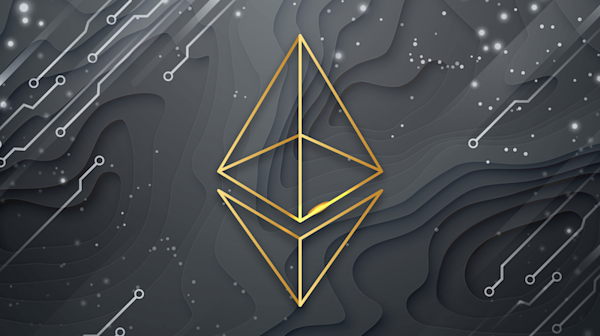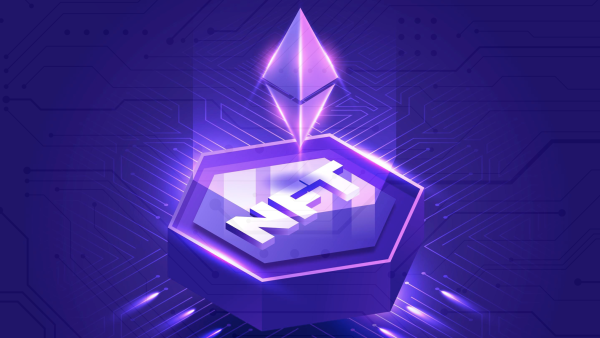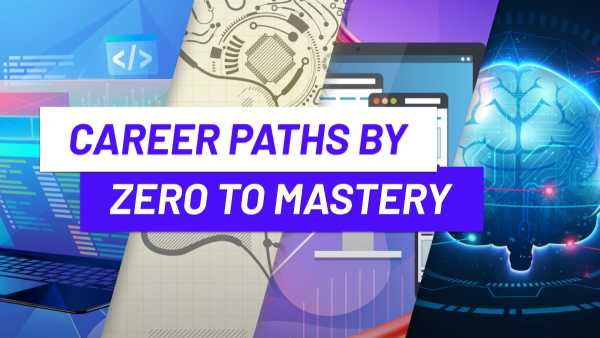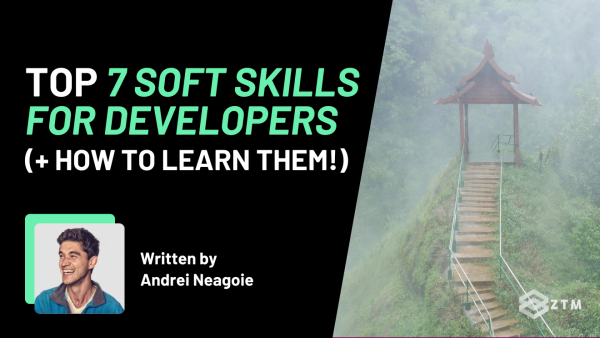The 5th Edition of Blockchain Developer Monthly!
Hey everyone! Markus here. If you've been here before, you can skip this section. If it's your first time, keep reading.
What's this all about?!
Well there are lots of blockchain newsletters out there that will hype you up on the latest NFT project or predicting some new token that's going to the moon. Maybe not so much in the last few months given NFT volumes have fallen off the cliff... but you get the idea!
But it's hard to find any that actually go deep into things that are relevant for developers working in the space.
That's why I created this - a newsletter dedicated to developers who want to stay up-to-date and excel in the world of web3.
In case you aren't already convinced... Being a solidity, blockchain, & ethereum developer is a fantastic career option.
Regardless of whether you love or hate crypto, there's no denying blockchain is an exciting technology with tons of job opportunities. You can work around the world, you get to work on solutions to big problems, and you're on the cutting edge of the tech sector.
But things move FAST.
So staying up-to-date with the constantly evolving ecosystem can be tough. If you're still reading this, maybe you want to be a top-performing developer within the web3 landscape, but probably don’t have time to find, read, and synthesize all the articles, videos and podcasts that come out each month.
So this monthly Blockchain Developer Newsletter was born.
I keep you up-to-date with what's happening within the web3 industry, without wasting your valuable time, by curating the most important articles, guides, news, resources, podcasts and videos from the past month.
This newsletter was inspired by Andrei's Web Developer Monthly + Python Monthly and Daniel's Machine Learning Monthly.
Ok, let's dive into this issue. I hope you enjoy!
Let's dive in. Here's what you missed in November 2022 as a Blockchain Developer…
FTX Bankruptcy - The Facts 💣
Unless you just came back from a month-long holiday, you’ve probably heard of the FTX fallout.
One of the biggest centralized crypto exchanges went bankrupt. People have called this one of the worst - if not the worst - day in crypto history. But you may not know exactly what happened, so let’s start at the beginning.
November 2. Coindesk published Alameda’s balance sheet which showed a very high dependence on FTT, the native token of the crypto exchange FTX.
Alameda is the trading firm of Sam Bankman-Fried (SBF) who also happens to be the founder of FTX. While they are legally two separate entities, people have always speculated about how separate Alameda really is from FTX and that a bankruptcy of Alameda may also affect FTX.
November 6. The founder of Binance, CZ, announced that Binance would be slowly selling its FTT tokens which it had acquired due to an early investment into FTX.
The official reason given for the selling was that SBF was lobbying for regulations that would hurt the ecosystem.
The reason this is important is that Binance had A LOT of the outstanding FTT tokens so them announcing they were looking to sell their whole position was a big deal and was a red flag for a lot of people.
November 7. With Binance beginning to sell its FTT, putting downward pressure on the price of FTT and causing people to panic, the FTT price drops significantly. Rumors of a potential FTX bankruptcy leads to mass withdrawals from the exchange.
Commonly referred to as a run on the bank or bank run. This isn't a new phenomenon and isn't unique to crypto or web3 at all.
November 8. Binance announced that it signed a non-binding agreement intending to fully acquire FTX, subject to a look at FTX's books (which, as we'll see, seemingly did not go well...).

November 9. Only one day later, Binance backs out of the agreement (it was non-binding after all). We can only speculate why but very likely because of the hole in FTX’s balance sheet (ie: they owed more money than they had... in a big way) was just too large.
November 11. The final straw breaks and FTX files for bankruptcy. At last it turned out the rumors were true.
Since then a few more details have emerged. It is alleged that FTX used customer deposits to bail out its failing Alameda company. If true, this would have been theft and fraud. We'll likely have to wait a few months, or even years, for all the details to come out.
But if you're a TV fan, you'll be happy to know that Amazon already purchased rights for the TV series.
And if you're a book fan, you've likely heard of Michael Lewis. He's an incredible author potentially most famous for his book Moneyball. Well... turns out he has been embedded with SBF for the last 6 months to write a book on him and the industry.
Well that book just got one hell of an ending.

FTX Bankruptcy - My Hot Take ⚖
What's my view? Well I think the most important thing to know that this was not a failure of decentralization and crypto.
In fact, it shows us exactly why we need it.

The FTX saga has indeed shown:
- The downside and risks of centralization and...
- that we 👏 need 👏 regulations 👏
Now you may be saying: "but wasn't FTX actually regulated already?".
Yes, in some ways, but the regulations were clearly not sufficient and seem to have been quite easy to get around.
So what could be better?
Regulations need to be transparent and be enforced! Could our centralized regulations get us there? Certainly to some degree, but if you think it all the way to the end, then you realize this is what DeFi actually does and helps solve.
The code of blockchains is openly accessible. The regulations are built into the code itself. Now of course you cannot expect normal people to verify all the code, but we can build towards an infrastructure where all important code has been publicly audited.
With DeFi, users also hold access to their funds via their own private keys.
"Not your keys, not your money" as they say.
In the future, account abstraction should be used to further help onboard less technical people into self-custody.
What about the risks of hacks? That is certainly an issue, as is the case with every industry. Think of all the centralized exchanges that got hacked in the past. DeFi may come with its own new attack vectors, but nothing that we cannot overcome in the industry with good practices and audits.
Let’s push to educate regulators about how DeFi can help for a case like FTX and push towards a better financial system.
Tools & Other Cool Things 😎
- A ‘bank-run’ on WETH happened a while after all the FTX drama, but it’s all a joke. If you have taken my Blockchain Developer course, one of the exercises involves implementing a simple WETH contract yourself. If you’ve done so, you understand why WETH cannot go bankrupt.
- Another month, another big Hackathon. This time in San Francisco. You can find a list of all projects here and the winners here.
- The US Government seized $3.6 Billion in Bitcoin from Bitcointalk user Loaded, who stole it from Silk Road in 2012 exploiting a double withdrawal bug. For a longer version of the story, check out this thread.
- merkle-tree is a JavaScript library to generate Merkle trees and Merkle proofs.
- If you want a quick reference guide to solidity & blockchain development, check out this free Solidity Cheatsheet that I created for students of my Solidity Bootcamp course.
- solidify is a new Golang + Solidity library aimed to make storing arbitrary data on EVM blockchains as easy and efficient as possible.
Updated ETH Roadmap 🗺
The founder of Ethereum, Vitalik, posted an overview of past, current and future Ethereum chain upgrade developments. On the diagram you will see things like the just-finished Merge (which we talked about back in August's newsletter), Verkle Trees, and account abstraction.
I'll summarize it quickly for you. Each of the five categories or levels relate to upgrades & improvements:
- The Merge is the first stage of Ethereum's revised technological plan and involves the move from "proof of work" to "proof of stake" (which you can learn about in this free lesson from my course). It happened in September 2022.
- The Surge is the second stage and focuses on increasing the capacity of transaction processing by introducing sharding.
- The Scourge is the third stage and will ensure that transactions are neutral and centralization is avoided.
- The Verge is the fourth stage and will reduce the amount of data that network validators have to store on their machines by introducing Verkle trees.
- The Purge is the fifth stage and will remove old network history and simplify the network over time with things like state expiry and deleting old history.
- The Splurge is the sixth stage and involves all sorts of smaller upgrades that will ensure that the network runs smoothly.
You can check out the full diagram below. It's definitely worth a read if you want to understand the future of Ethereum:

If you want to dig deeper into any specific topic, I recommend reading this thread.
Waffle 4 is out 🧇
A new version for the Solidity testing framework Waffle has been released. I’ve covered the previous version 3 here.
The update comes with some interesting new features, specifically:
- Regular Expressions in
revertedWith - Chaining
to.emitmatchers - Events with arguments
- Structs in the
emit.withArgsmatcher - Reverted with custom errors: I discuss this missing feature in my Blockchain Developer course. Fortunately with this addition you no longer need to use a workaround anymore (look for a course update on this soon!)
- Matcher
to.changeTokenBalanceaccepts address strings
See you next month!
I hope you enjoyed this edition of Blockchain Developer Monthly.
Something missing? Have an idea of what to include in a future post? Let me know.
See you next month,
Markus
By the way, I teach people how to code in Solidity and get hired as a Blockchain Developer in the most efficient way possible. Come check out a few of our Blockchain & Web3 Courses below and try out some of the free preview lessons.







